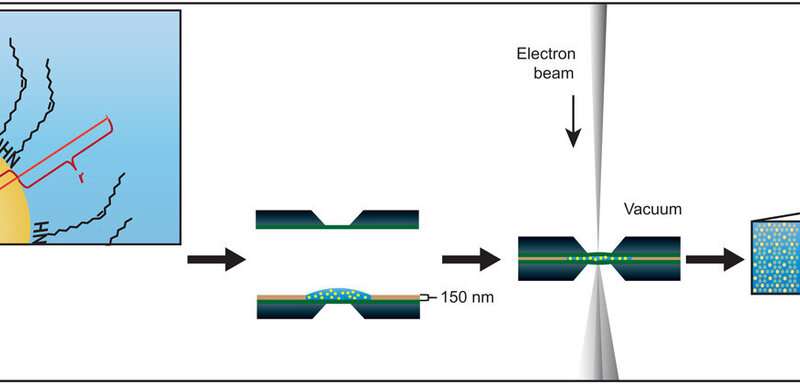Nanoparticle superlattice films that form at the
solid-liquid interface are important for mesoscale materials but
are challenging to analyze on the onset of formation at a
solid-liquid interface. In a new report on Science Advances, E.
Cepeda-Perez and a research team in materials, physics and
chemistry in Germany studied the early stages of nanoparticle
assembly at solid-liquid interfaces using liquid-phase electron
microscopy. They observed oleylamine-stabilized gold nanoparticles
to spontaneously form thin layers on a silicon nitride membrane
window of the liquid enclosure. In the first monolayer, the
assembly maintained dense packings of hexagonal symmetry
independent of the nonpolar solvent type. The second layer
displayed geometries ranging from dense packing in a hexagonal
honeycomb structure to quasi-crystalline particle
arrangements—based on the dielectric constant of the liquid. The
complex structures made of weaker interactions remained preserved,
while the surface remained immersed in liquid. By fine-tuning the
properties of materials involved in nanoparticle superlattice
formation, Cepeda-Perez et al. controlled the three-dimensional
(3-D) geometry of a superlattice, including quasi-crystals (a new
state of matter).
Electron microscopy of nanoparticle superlattice formation
at a solid-liquid interface in non-polar liquids




